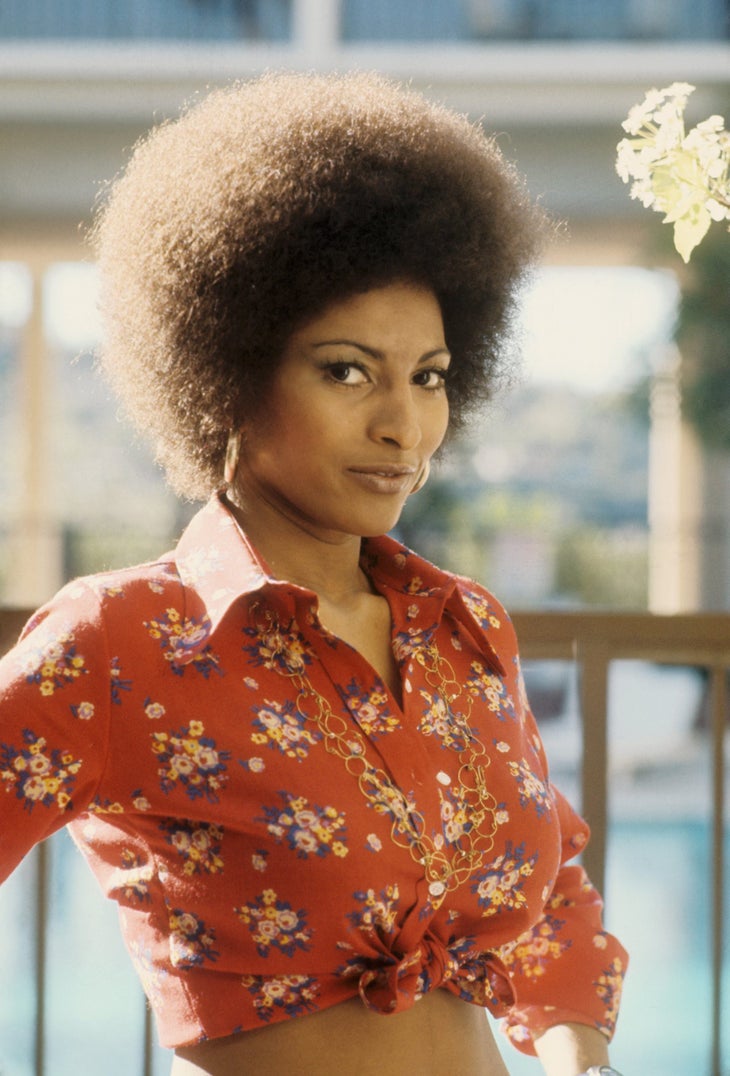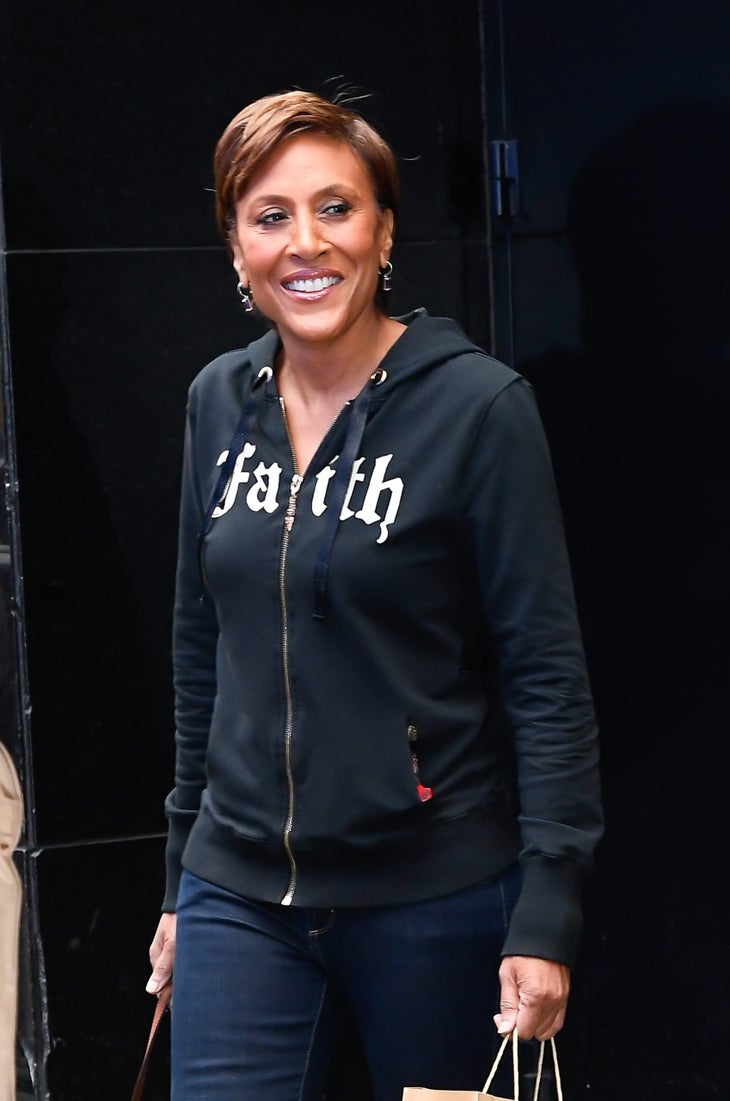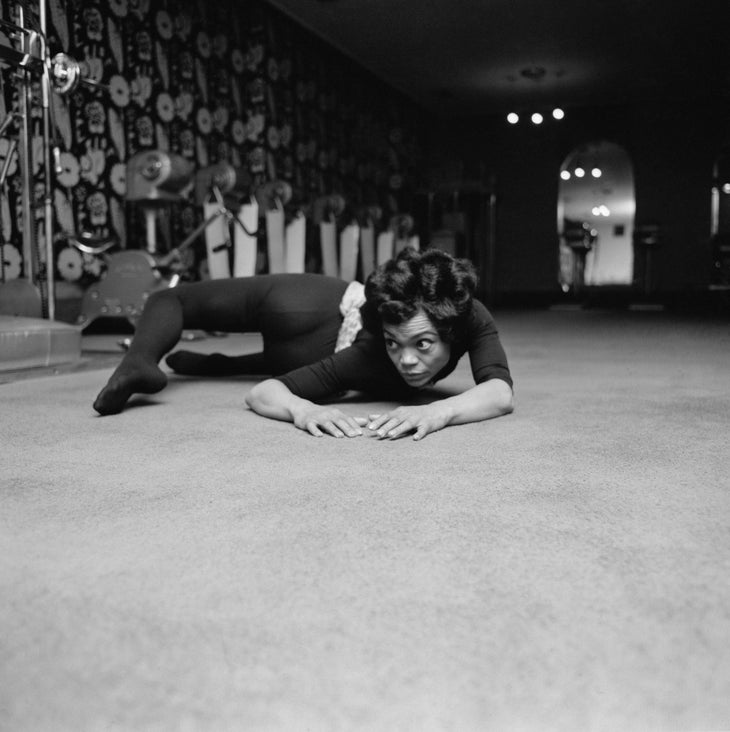7 Famous Black Women Who Did Yoga

[ad_1]
“], “filter”: { “nextExceptions”: “img, blockquote, div”, “nextContainsExceptions”: “img, blockquote, a.btn, a.o-button”} }”>
Heading out the door? Read this article on the new Outside+ app available now on iOS devices for members!
>”,”name”:”in-content-cta”,”type”:”link”}}”>Download the app.
It was the picture of Rosa Parks that started it. Not one of the “Black history” photos we’ve seen of her in a neat coat and prim hat, looking more like a church deaconess (which she was) than a revolutionary (which she also was). No, this picture showed her wearing a black leotard, kneeling on a Mexican blanket. Rosa was doing yoga.
The unexpected image became the touchstone for Black Women’s Yoga History: Memoirs of Inner Peace by Stephanie Y. Evans, Ph.D. In this book, recently out in paperback, Evans explores the ways that Black women have used yoga to find peace and balance in a world that has not been kind or easy.
“This work traces how Black women learned to breathe (expressed in popular culture as “woosah”), despite conditions that were painfully breathtaking,” she says. “Specifically, I investigate the inner peace practices that elder Black women have used to try to bring their lives into balance.” Her research found evidence of African-American women using meditation, postures, and other forms of contemplative practice as far back as slavery.
As director of the Institute for Women’s, Gender and Sexuality Studies at Georgia State University, Evans scoured archives, contemporary literature, and historical documents looking for references to yoga and mindful practices—and found some unexpected yoga devotees. Here, some of the well-known women who have practiced yoga for physical health, mental wellness, and emotional balance.
Rosa Parks would answer the door in yoga pants
“Parks practiced yoga for more than 30 years and taught yoga in her community. She documents her own mother leading her and her brother in daily ‘stretching exercises,’” writes Evans. Parks started learning yoga in earnest in 1965, when she was already in her 50s.
At the time she practiced, many notable African-Americans were embracing the yogic lifestyle. After the heat of the Civil Rights movement, the Black Power Movement pushed into the ’70s with the mantra “Black is Beautiful” and with a focus on Black health through self care and community involvement.
Younger family members recall Parks accompanying them to yoga classes; they say she cultivated a home practice as well. A devout church-going woman by all accounts, Parks was open minded about incorporating yoga into her life as an activist. Records show her demonstrating yoga at events in Detroit where she lived, and she included yoga in the programs she designed for the youth development institute that was founded in her name.
“The exercises help clear her mind, the stretches keep her body limber,” her younger relatives said. “Inner peace and clarity have always been important to her.”
Angela Davis did headstands in a prison cell

In 1970, scholar and Black Panther activist Angela Davis was falsely charged with aiding another Black activist in an escape attempt. She landed on the FBI’s Ten Most Wanted List and was eventually tried, sentenced, and incarcerated for 16 months before being acquitted. Yoga and mindfulness helped her through the ordeal.
A doctor recommended these practices to help relieve migraines from the stress of the trial. She continued an asana practice to deal with the physical and emotional stress of prison—and to maintain some control of her experience. While absurd prison rules restricted her movement and activity, she said, “They could do nothing to prevent me from doing…headstands when I felt like it.”
“Davis certainly recognizes the power of yoga to assist in creating mental stability for enduring the horrors of prison,” Evans writes. “However she is clear that the goal of yoga is not to make prison more tolerable, but, instead, the goal of yoga is to find the strength to fight against the dehumanization of the prison-industrial complex.”
“Meditation and yoga enabled her to heal herself, claim herself, and resist (at least in part) her jailers’ capacity to dehumanize her,” Evans says.
Film star Pam Grier practiced yoga on set

Pam Grier, queen of ’70s Blaxploitation films, starred in over 50 movies. Almost all of them—From Foxy Brown in 1973 to Quentin Tarantino’s Jackie Brown in 1997, cast her as a sexy, gun-toting badass with a huge afro and an even bigger attitude.
In her real life, Grier worked hard to overcome the scars of sexual abuse and assault, and, later, a cervical cancer diagnosis. Yoga, acupuncture, massage, Chinese medicine, and other integrative medicine practices were part of her healing journey.
“I started to practice yoga to quiet my mind and learn to be still,” she said. She studied natural healing methods and committed to a daily practice, even on movie sets. “The point was to be able to sense—in other words, to feel and hear—any medical issues in the body and mind.”
See also: Intro to Ayurveda: Understanding the Three Doshas
News anchor Robin Roberts used “Motown yoga” for healing

Good Morning America host Robin Roberts faced a challenge few could withstand: back-to-back cancer diagnoses—first breast cancer, then a bone marrow disease. A former athlete and ESPN sportscaster, she didn’t balk when her doctor’s told her it was important to stay active as she recovered from surgery and treatments. But her compromised immune system meant group classes and crowded gyms were out. While she was in the hospital, she practiced with her physical therapist Christine, who played Roberts’ favorite Motown music to lift her spirits. She used the small gym in her apartment to do so solo sequences after she left the hospital.
“I soon discovered with Christine that yoga is about much more than flexibility. It truly is a beautiful, serene practice. Breathing. Being. Feeling. [Doing] yoga with Christine was just what I needed, for my body and soul,” she said.
See also: Yoga Boosts Cancer Survivors’ Wellbeing
An opera diva taught Pavarotti yoga
Opera diva Jessye Norman “mentions yoga and meditation in numerous places throughout her memoir and counts meditation and yoga as a central part of her cultural identity, spiritual center, and professional development,” according to Evans.
Norman used yogic breathing techniques in her vocal practice, but also practiced asana and meditation. “It took a lot of practice, as it is not easy to sit and clear your mind, center yourself, concentrate on your breathing and your posture and your chosen “ohm” chants,” Norman said. “By now I can practice hatha yoga anywhere… I can speak very strongly to its rewards.”
It wasn’t Norman, but another opera singer—the soprano Shirley Verrett—who taught yoga to the great tenor Luciano Pavarotti. “I was backstage doing a yoga stretch, touching the floor, and then slowly rising back up. It helps circulate the blood and relaxes you,” Verrett said. When Pavarotti asked what she was doing, she not only told him but showed him. She said that, before long many of the other singers were practicing Uttanasana in their evening clothes.
See also: Find the Power of Your Voice in Your Throat Chakra
Yoga kept “Catwoman” Eartha Kitt purring

You may know Eartha Kitt as the fierce, feline supervillain from late ’60s Batman reruns. (Or from her purring rendition of the song “Santa Baby” that plays nonstop during the Christmas season.) The jet-setting actor/singer was something of a yogi as well. In one famous photo, she is wearing an orange swimsuit while perched in a perfect Peacock pose.
“When the [brain and body] are functioning well in concert, there is nothing in the world more exciting,” she said. “So I strive to make the body love the mind and the mind love the body, keeping the spirit vigorous as a consequence.”
While she didn’t call her self-care practices “yoga,” both the physical exercises and her wellness philosophy fit the description. In her fourth and final memoir—a wellness guide written when she was almost 75 years old—chapter names include “Breathe,” “Stretch,” “Bend,” and “Balance.” She offers instructions for exercises like Happy Baby and Savasana. And she gave advice that seems straight from the sutras:
“Don’t you feel better when, during a tense moment, you take a deep breath and a stretch and go for a walk? We also advance our well-being when, instead of immediately responding to an annoyance or insult, we ‘take a breath.’”
Yoga helped rapper Queen Latifah find her breath

It makes perfect sense that a rapper would benefit from pranayama practices; you have to be in full control of your breath if you’re going to spit rhymes like Queen Latifah does.
The New Jersey-born hip-hop artist/singer/actor might not fit the description of your typical yogi (if there’s any such thing) but for Queen Latifah (Dana Owens’ professional name), yoga was a pathway to healing and health.
“Yoga taught me how to concentrate on the breath, and it’s been a helpful tool for finding balance in my life,” she said. She leaned on the practice to address the pain of her brother’s death, her parents’ divorce, and sexual violence she survived as a child.
“I’m no yogi or guru, but I’ve learned over the years that sometimes we run away from the pain, and when we do that, when we mask the pain, our emotional issues tend to pile up like a bunch of dirty laundry,” she wrote in her memoir. “When you’re holding certain poses, that pain becomes a measure of where you are, physically and emotionally, and the more you do it, the farther you can get,” she said.
Why it’s important to see Black women doing yoga
Black Women’s Yoga History, Evans writes about Tina Turner’s chanting, Rita Marley’s meditation, Oprah Winfrey’s promotion of all things wellness—as well as the experiences of many lesser known yoga practitioners and healthcare advocates. Their efforts are important examples of health role-modeling, she says—whether they called it yoga or not.
Author Alice Walker is among the most vocal proponents of the power of yoga. “The practice of yoga is a holy endeavor and the teaching if it to our people a very high calling,” she writes.
The prize-winning poet uses yoga as a way to connect with her body and honor her sisters. She writes, “Lying on my yoga mat… I concentrate on my breath, and silently thank the Creator for allowing it to flow into and out of me. It is such a joy to know how to do this.”
And she continues, “From the final savasana of the yoga mat it is easy to see how like orchids we have been, and still are. Beautiful, rare, common, fragile, strong, exotic, plain. Gorgeous….”
[ad_2]
Source link
